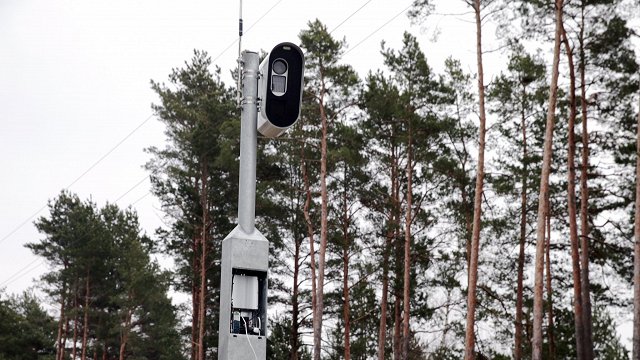The attack on the Occupation Museum took place on the night of February 28. A combustible material was thrown through a window into the museum and caught fire. Smaller attacks have taken place in the past and following them, video surveillance was stepped up in the vicinity of the museum.
Solvita Vība, Director of the Museum of the Occupation, said at the end of February: "The risks are known, we know what we are doing and we know what story we are telling. And we have been informed in advance about incidents in communication, including physical incidents, this is what we are aware of in doing our work."
By all accounts, the attack was carefully planned. The attacker's face was covered by a mask, and the escape routes were well thought out. Nevertheless, in less than two days, all three perpetrators - one from Jelgava, and two from Olaine - were apprehended and arrested. The video cameras also played a role in the detection of the crime.
"The State Police used cameras not only at the Occupation Museum but also elsewhere to [trace] the path and the retreat routes used by the attackers," the Interior Minister said.
Riga currently has 310 cameras in a single video surveillance network. They have enhanced security standards, allowing them to be used by the State Police at the same time. Several hundred more cameras are planned to be added to the system in the coming years.
"Video cameras are installed in places where the greatest concentration of citizens and visitors, respectively in sensitive areas where the constant presence of police officers is not useful, but they need to monitor various memorials, places of remembrance, any sensitive place," said Jevgēņijs Platais, Head of the Operational Management and Security Supervision Department of the RPP.
Only some of the cameras allow automated handling and selection of data, but there is still a lot of work to be done before truly intelligent video surveillance.
"We have analytics available, for example, you can set up data about a person inside and the software provides you with the relevant data, infer where on what cameras they appear, or for example a car number, you can do that too. That is what we are aiming for and every year we hope to improve the technology accordingly," said Platais.
Rīga has many cameras for the traffic control center, but they do not meet the standards to be used on the same network as the others. They will be replaced gradually.
Several years ago, when the wave of terrorism swept across Europe, many countries also reviewed their CCTV solutions.
According to the government's action plan, Latvia plans to have some of its CCTV solutions in place by 2026. But we cannot wait that long. The attack on the Museum of the Occupation has already been assessed by officials in the context of hybrid warfare and as a threat to national security.
Various institutions continue to install CCTV systems as they see fit, and there is no common picture. For example, cameras installed in municipalities often cannot be linked to the State Police network. The recordings from such cameras are retrievable and usable by the police, but it takes more time and resources to detect a crime.
"It's not that we don't have that coverage. We already have these cameras in many places, even on the same roads. It's just that the difference now is that we have to go and manually - at one, at the other, we need from the level crossing, we go to Latvian Railways, we ask, we retrieve, we put into our system respectively, where then the analytical tool works. And so we lose time," said Armands Ruks, Chief of the State Police.
The Minister of the Interior is planning to set a common standard for the purchase of such equipment by municipalities, which, to save money, still tend to buy equipment manufactured in unreliable countries that cannot be connected to the same network.
"What is important now is that we are building a skeleton that we want to grow muscle on, and that is what we will do. The skeleton is already practically taking shape, it does not matter whether there are a hundred, five hundred, or two hundred cameras," said the head of the State Police.




























